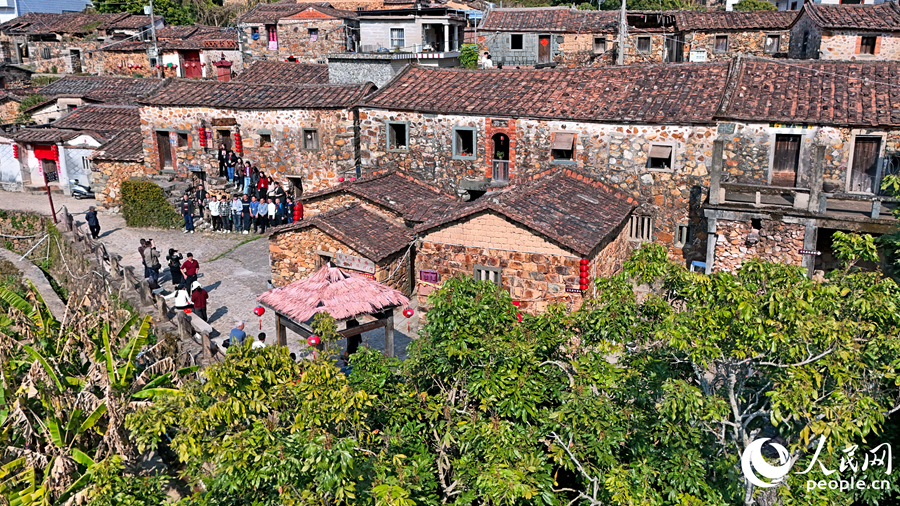




- BRNN
- BRI News
- BRNN News
- Database
Official Documents Polices and Regulations
Inter-government Documents International Cooperation BRI Countries
Business Guide Economic Data BRI Data
Trade
Investment Projects Latest projects
Cases - Content Pool
 |
| Aerial photo shows Zhangjiao village, Tuling town, Quangang district, Quanzhou city, southeast China's Fujian Province. (People's Daily Online/Li Changqian) |
As spring flowers bloom, Zhangjiao village, a traditional Chinese village in southeast China's Fujian Province, is drawing large crowds of tourists.
Located in the northwest of Tuling town, Quangang district, Quanzhou city, the village's ancient homes are nestled into the mountainside in a visually appealing layout. The winding cobblestone paths, sunlit stone walls and tourists adorned with traditional hairpin flowers blend to form a picturesque scene.
Most of these historic homes were initially built during the fourth year of Emperor Jiaqing's reign in the Qing Dynasty (1644-1911), over 200 years ago.
The village's founders used local materials like bluestone and colorful stones, abundant in the surrounding mountains, to construct the dwellings. Its vibrant appearance has led to the village being dubbed the "oil painting mountain village."
In recent years, the village has actively developed ecological tourism. Renovated homes have become tea houses where local black tea is sold, and studios offering hairpin flower makeup have been established. Young returnees have also converted homes into multifunctional spaces that combine tea culture with photography.
These initiatives embody a strategic approach to integrating culture and tourism, offering diverse experiences for visitors while attracting photographers, artists and tourists.

Tel:86-10-65363107, 86-10-65368220, 86-10-65363106